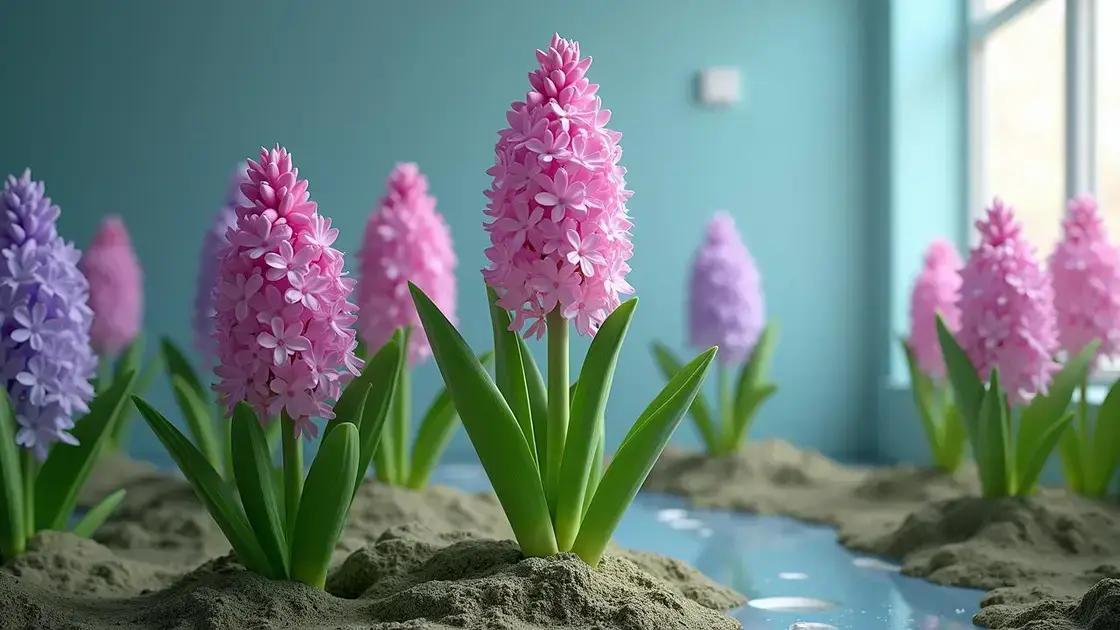How to Care for a Hyacinth Plant: 7 Essential Tips for Success
How to care for a hyacinth plant is a question many gardeners ask when they want beautiful blooms. These lovely flowers bring vibrant color and delightful fragrance to any garden or home. Learning the essentials will help you nurture them effectively and enjoy their stunning display throughout the blooming season.
Table of Contents
ToggleUnderstanding the best watering schedule for hyacinths
Understanding the best watering schedule for hyacinths is crucial for ensuring their growth and blooming. Hyacinths thrive with proper hydration, but overwatering can lead to root rot while underwatering can hinder their growth.
To create the ideal watering schedule for your hyacinth plants, consider the following tips:
- Frequency of watering: During the growing season in spring, water your hyacinths approximately once a week. Allow the top inch of soil to dry out before watering again.
- Monitor soil moisture: Use your finger to check the moisture level below the surface. If the soil feels dry, it’s time to water.
- Watering techniques: Water at the base of the plant to avoid wetting the leaves. This helps prevent fungal diseases.
Here’s a simple approach to maintain an effective watering schedule:
- Check the soil moisture weekly.
- Adjust your watering frequency based on temperature. In warmer temperatures, you may need to water more frequently.
- When the flowering period ends, reduce watering to bi-weekly as the plant enters dormancy.
Hyacinths also provide a fantastic display when planted in clusters. Consider watering collectively to enhance your gardening experience. You can enhance your indoor garden by exploring indoor gardening techniques that complement your hyacinth care.
Signs of overwatering and underwatering
Recognizing how to care for a hyacinth plant involves understanding the signs of overwatering and underwatering. Here are key indicators:
- Overwatering may lead to: Yellowing leaves and mushy bulbs.
- Underwatering might show: Wilting leaves and stunted growth.
To prevent these issues, always check the soil before watering. A consistent and mindful approach can lead to beautiful blooms and healthy plants.
Selecting the right soil for healthy hyacinth growth

Selecting the right soil for healthy hyacinth growth is essential for nurturing vibrant and robust blooms. A well-balanced soil mix can significantly impact the overall health and flowering of your hyacinths.
Here are key factors to consider when choosing soil for your hyacinth plants:
Soil composition for hyacinths
Hyacinths thrive best in well-draining, nutrient-rich soil. The ideal soil composition should include:
- Loamy soil for good drainage
- Organic matter like compost or well-rotted manure
- Perlite or sand to improve aeration
Recommended soil mix ratios
To create an optimal soil mix for your hyacinths, consider the following ratios:
- 40% loamy soil
- 30% organic matter
- 30% perlite or sand
This combination allows for excellent drainage while providing essential nutrients for healthy growth.
Common soil options for hyacinth care
When selecting the right soil type, consider these popular options:
- Commercial potting mix: Look for one that specifies good drainage.
- DIY soil mix: Combine the recommended elements for a tailored mixture.
- Cactus mix: Can be effective due to excellent drainage properties.
Additionally, ensuring your plants receive adequate nutrients can lead to stunning displays. You might also enjoy exploring indoor gardening techniques that can help you craft the perfect soil for various plants.
Remember, testing your soil’s pH can provide valuable insights. Hyacinths prefer slightly acidic to neutral pH levels (between 6.0 and 7.0), promoting optimal nutrient absorption for robust growth and beautiful blossoms.
Providing optimal sunlight exposure for blooming hyacinths
Providing optimal sunlight exposure for blooming hyacinths is critical to achieving vibrant, full blooms. These charming flowers thrive on the right amount of sunlight, which promotes healthier growth and beautiful colors.
To ensure your hyacinths receive the perfect sunlight, consider the following factors:
Sunlight needs of hyacinths
Hyacinths typically flourish in:
- Bright, indirect sunlight: 6-8 hours daily
- Direct sunlight: Some morning sun can be beneficial but avoid harsh afternoon rays.
- Light adjustments: During growth, gradually expose them to more light.
Best locations for your hyacinths
Choose the right spots for optimal sunlight exposure:
- Indoor locations: A south-facing window is ideal for bright light.
- Outdoor placements: Plant in a spot with partial shade to protect from scorching sun.
- Rotate pots regularly: Ensure all sides receive equal sunlight.
Additionally, consider moving your potted hyacinths outside during the warmer months for enhanced light exposure. You could also enjoy exploring indoor gardening techniques that highlight effective light management.
Signs of insufficient sunlight
It’s important to recognize when your hyacinths are not getting enough light:
- Signs include: Stunted growth, leggy stems, and pale, yellowing leaves.
- Tips for recovery: Increase light exposure gradually, especially during the growing season.
Implementing these practices will help your hyacinths bloom beautifully and thrive in their environment. Remember that balancing light exposure is key to nurturing healthy, vibrant plants.
In conclusion
Caring for hyacinths effectively encompasses understanding their watering schedule, selecting the right soil, and providing optimal sunlight exposure. By mastering these essential aspects of hyacinth care, you can ensure vibrant blooms and healthy growth.
Remember to adjust your watering techniques based on your plant’s needs and choose a nutrient-rich soil to support their development. Additionally, providing the right amount of sunlight can significantly enhance their blooming potential.
For further insight into nurturing your plants, you may find tips on enhancing your indoor garden helpful.

